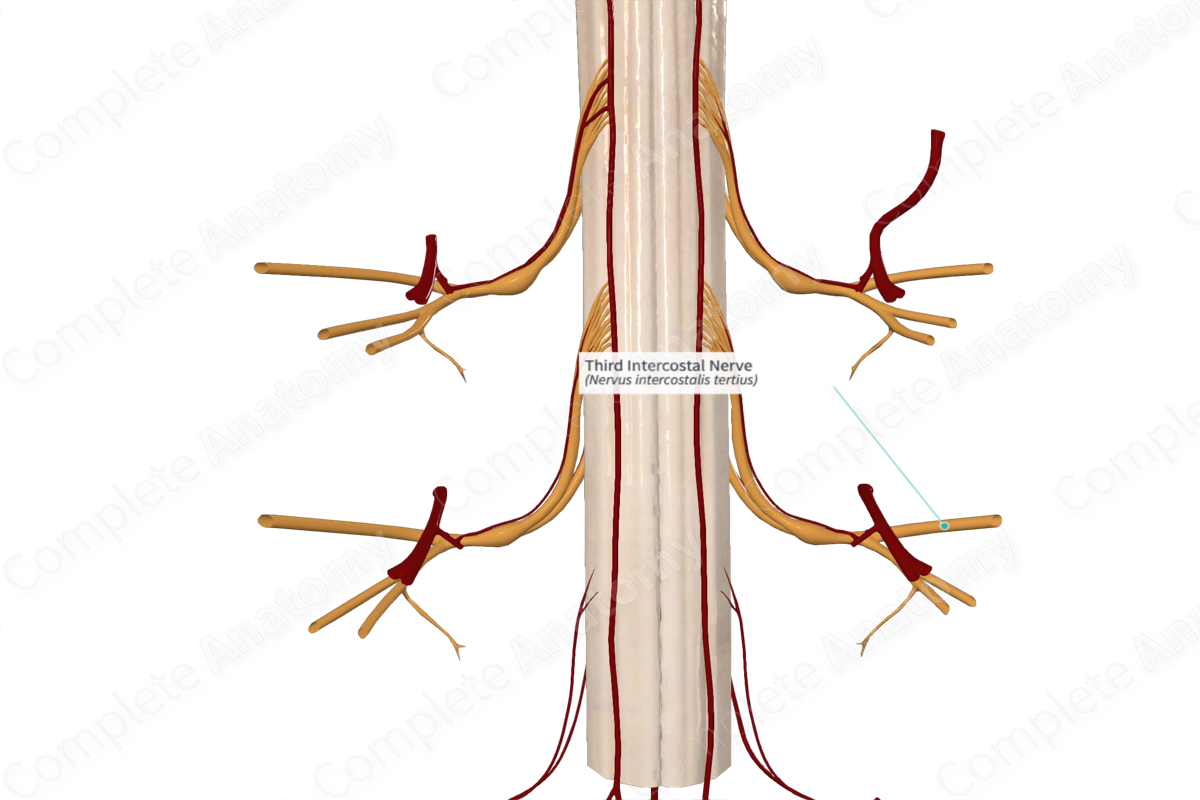
Quick Facts
Origin: Third thoracic nerve.
Course: Travels within the third intercostal space.
Branches: Collateral, lateral cutaneous, and anterior cutaneous branches.
Supply: The anterior ramus supplies motor innervation to the muscles of the third intercostal space and conveys sensory innervation from the skin overlaying the third intercostal space.
Related parts of the anatomy
Origin
The anterior ramus of third thoracic nerve (or third intercostal nerve) is one of two branches of the third thoracic nerve, the other being the posterior ramus.
Course
The anterior ramus passes forward, lying between the pleura of the lungs and the internal intercostal membranes. It then enters the space between the internal intercostal and innermost intercostal muscles to course through the third intercostal space. It is also accompanied by an intercostal artery and vein, where the vein sits closest to the rib above, followed by the artery and nerve. At the anterior portion of the intercostal space, the anterior ramus passes anterior to the transversus thoracis muscle and the internal thoracic vessels, where it reaches its termination as the anterior cutaneous branch.
Branches
Near its origin, the anterior ramus of the third thoracic nerve gives off a collateral branch that descends in the intercostal space and courses along the inferior border of the space, in the same plane as the anterior ramus itself.
The lateral cutaneous branch of the anterior ramus of third thoracic nerve branches from the anterior ramus around the mid-axillary line. It briefly accompanies the nerve before piercing through the chest wall. The lateral branch further subdivides into anterior and posterior branches that extend towards pectoralis major muscle and the scapula and latissimus dorsi muscles, respectively, thus, supplying the overlying skin.
The anterior cutaneous branch arises as the anterior ramus of third thoracic nerve reaches the anterior portion of the intercostal space. The anterior cutaneous branch also pierces the chest wall.
Supplied Structures & Function
The anterior ramus of the third thoracic nerve supplies motor innervation to the intercostal muscles of the fourth intercostal space (external intercostal, internal intercostal, innermost intercostal), transversus thoracis, serratus posterior superior, and serratus anterior muscles. It also receives sensory innervation to the skin overlying the third intercostal space.
List of Clinical Correlates
- Referred pain
Learn more about this topic from other Elsevier products
Intercostal Nerve

Slipping rib syndrome is produced by impingement of an intercostal nerve between two costal cartilages, secondary to the subluxation of an interchondral articulation.



